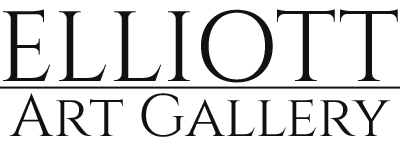DAVID SCHNEUER
David Schneuer’s fine art is a unique witness to Europe between the World Wars and the golden period of German Expressionism.
He was born in 1905 in Austro-Hungary and raised mostly by his mother due to the effects of World War I and losing his father to the war. After graduating from the Munchner Kunstgewerbeschule, he moved to Paris, where he collaborated with many leading artists
By his early childhood his family decided to move to Berlin. On their way however, after a delay in Hamburg, the Schneuer’s settled permanently in Munich. A Jewish boy in a Catholic school, Schneuer eventually joined a Zioniest group that encouraged him to go to Prussia to learn more practical things such as forming. Upon his return to Munich, with a more developed sense of a craftsman work, Schneuer began painting signboards for Jewish shops. After a six month stay in Berlin working as a sign painter, Schneuer returned to Munich and enrolled in the Berufsschule, where he was taught more about composition and design. Back in Munich he met Tim Gidal, a photographer, who persuaded Schneuer to go to Paris. In Montparnasse for a year and a half, Schneuer roamed the streets, returning to his room on the sixth floor to draw inspired not necessarily by what he saw, but by his imagination. His reliance on his imagination over the external world stayed with Schneuer throughout his artistic life. Internal, but not socially unaware, Schneuer’s work expresses an intuitive creativity without being nostalgic.
When he returned from Paris in 1927, Schneuer began painting posters for the theatre. He worked with one of the most renowned German set designers, Otto Reigbert through whom his artistic sensibility matured. While most artists for the theatre painted in either a constructivist typography or a more flowerly Art-Deco inspired manner, Schneuer’s posters formally reveal a unique balance between spontaneous design and more geometric lettering. His expression seems one based on improvisation, one that successfully conveys a concern for his production deadline, and more importantly, the viewer. Living in Germany, Schneuer was not oblivious to other artists working at the time. While many of the experienced poster designers created lithographs, Schneuer was one of the first Munich artists to create linocuts. He was drawn to the Expressionist artists of the “Neue Sachlichkeit” group, including Grosz, Dix and Schrimpf. Schneuer’s stylized, yet elegant and dynamic figures, in their unspecific environments, help blur the boundaries between illustration, advertising, and drawing-all while cautiously inserting a sense of eroticism.
Schneuer worked for the theatres until 1932, when their influence began to dissolve. After a visit to Tel Aviv, Schneuer returned to Munich where he was soon arrested under the fabricated accusations of an artistic dissident and deported to Dachau. Two months later, he was released and after a short stay in Prague, he moved to Tel Aviv permanently. Taken by the newness of the city (only 25 years old at the time of his first visit), Schneuer was perhaps inspired most by the eclectic atmosphere, one which allowed Schneuer’s imagination to express creatively his interpretation of it. He continued to paint for public spaces to support himself, all the while painting from his internal memory and his imagination. His elegant figures arranged in a seemingly blank setting, are at once active and passive, anonymous and identifiable, strong and delicate, and engaging yet calm. These qualities define the uniqueness of David Scheuner’s work, and it’s timelessness as well. Upon his release in 1933, he emigrated to Palestine and settled in Tel Aviv. His paintings, as well as his trademarks, posters and public murals, were received with great enthusiasm in the rapidly expanding city.
The same motifs which he used while designing for Brecht, are to be found in his paintings – subtle eroticism, sensuous characters and exuberant humor enhanced by refined colors. Unaffected by the ever-changing world about him, Schneuer continued to develop his expressionist style until his death in November 1988.
In the 1920’s he worked as a stage and poster designer in Berlin and Munich, developing his own style influenced by the German art of Kirchner, Grosz and Beckmann. It was during this time that he perfected his lithographic poster techniques. In 1932 he was arrested as an artistic dissident and was imprisoned in Dachau. Upon his release in 1933, he immigrated to Palestine and settled in Tel Aviv. There his paintings, as well as his trademarks – posters and public murals – were received with great enthusiasm in the rapidly expanding city. Once in Tel Aviv, Israel, Schneuer did wall-decorations for hotels, cafes and bars. Included in his long list of credits was Hotel Dan Carmel in Haifa, a hotel in Abidjan in 1962 and the Zim company’s ships built in Antwerp in 1964. David Schneuer always felt his ‘art’ was his personal statement while his ‘craft’ was a collaboration between craftsman and client.
The same motifs, which he used while designing for Brecht, can be seen in his paintings – subtle eroticism, sensuous characters, and exuberant humor enhanced by refined colors. Thomas Mann and the plight of the common man influenced Schneuer while in Germany. Ultimately, from the late 1960’s onward, his work seemed to deal less with reality than with its reflection. The figures seemed to arise from La Boheme, Baudelaire, Toulouse-Lautrec, Cheret and Mucha. His work was a Munich version of early Twentieth Century Paris, fashioned in Tel Aviv at the later part of the century. His memories of people, places, and relationships past were recessed deep into his subconscious.
Unaffected by the ever-changing world about him, Schneuer continued to develop his expressionist style until his death in November of 1988.
Want to be the first to know which artist is featured in our weekly sale? Sign up below!
Discounts range from 10-30% and include FREE SHIPPING!
